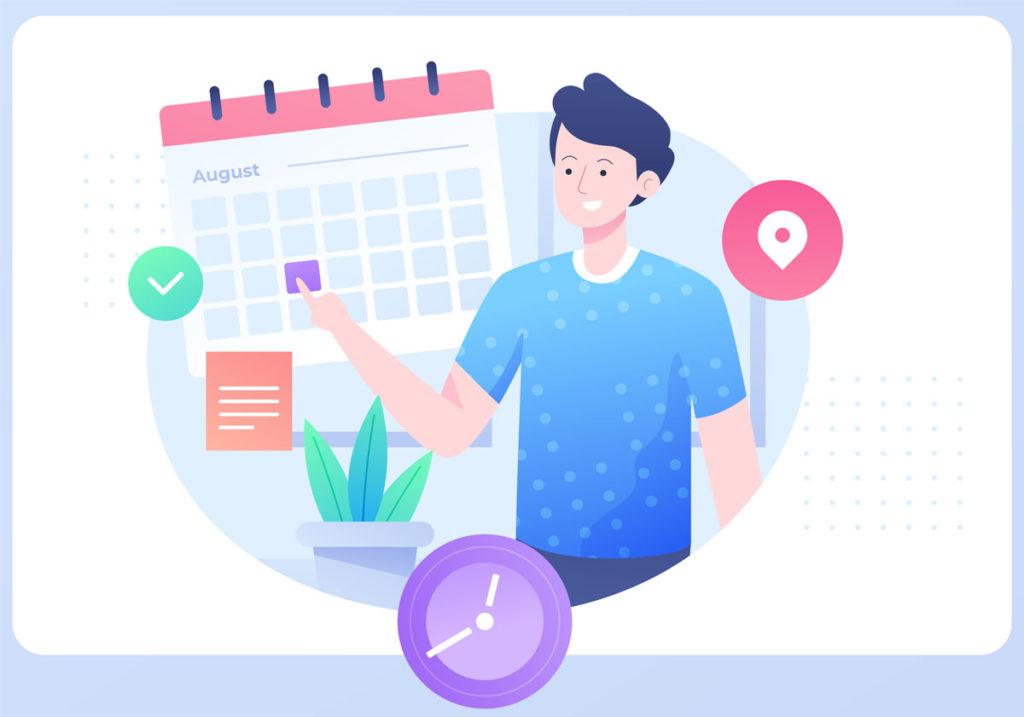Deciding between inbound and outbound sales strategies is a crucial choice for any business and has been an age-old debate for both B2B and B2C businesses.
There’s no obvious choice because every business is unique, with a unique value proposition and target audience. So simply following what other businesses are doing may turn out to be a bad decision.
The best way forward is to take a step back and analyze your goals, target audience, and product with a magnifying lens. Doing this will lead to your preferred choice for generating sales—inbound, outbound, or a hybrid model between the two.
And that’s what we are going to look at in this blog post. We’ll explore the pros and cons of both inbound and outbound sales. Post that, we’ll also explore the different factors based on which you should prioritize inbound or outbound sales. So, let’s dive in!
What Are Inbound Sales? What Are Its Benefits?
Inbound sales are when customers approach your business through content, SEO, social media, or word-of-mouth.
This approach contrasts with traditional sales tactics. Instead of reaching out to customers, you create pathways for them to find you.
Benefits of inbound sales:
- Cost-effective: Inbound sales reduces the need for aggressive advertising or a team of sales reps, saving money in the long run.
- Scalable as the audience grows: As your content reaches more people, its impact grows without additional cost.
- Not intrusive: Customers come to you, creating a more natural engagement.
- Potential to build thought leadership/brand loyalty: Quality content positions your brand as an industry leader.
- Builds long-term relationships: By providing value first, you establish trust and loyalty.
- Aligns with modern buying habits: Today’s consumers prefer to research and discover products at their own pace.
What Are Outbound Sales? What Are Its Benefits?
Outbound sales are the classic approach to selling where you reach out to potential customers directly, often through calls, emails, and in-person meetings.
This method is about initiating the first contact. It’s proactive and straightforward, targeting specific customers through deliberate outreach.
Benefits of outbound sales:
- Better targeting and control: You choose whom to approach, focusing on the most promising leads.
- Quicker results: Direct contact can lead to faster sales, ideal for short-term goals.
- Personalized approach: Tailor your message to each prospect, increasing the chances of success.
- Higher conversion rates: Targeted outreach often leads to a higher percentage of sales.
- Ideal for niche markets: Outbound is effective for specialized products that require specific customer education.
Inbound Vs. Outbound Sales
Now that you know the benefits of both inbound and outbound sales, let’s do a head-on-head comparison on different aspects to understand things better:
1. Scalability
Inbound sales become increasingly scalable as your audience grows. The more your content spreads, the wider your reach becomes.
Outbound sales, in contrast, face scalability challenges because the resources invested grow along with the customer base. After a certain point, reaching out to more people requires you to invest in expensive tools and good sales reps.
2. Initial Effort and Time
Inbound requires a lot of initial effort and time as content marketing, social media marketing, and SEO take time. But the results compound over time.
Outbound sales, on the other hand, has the potential to yield immediate results but also demands considerable effort.
3. Control And Predictability
Outbound sales offer more control and predictability. It allows for better lead qualification through targeted prospecting. The results are more predictable as you decide whom to reach out to. There’s a lot of control over the entire process.
Inbound sales, in comparison, offer less control. You can quality leads up to some extent, but the kind of people that you want to target is not entirely in your control like in the case of outbound.
4. Intrusion
With inbound sales, there’s lesser sales friction, as it’s not intrusive and aligns with the customer’s interests and timing.
On the other hand, outbound sales strategies like cold calling or sending outbound emails, can feel more like knocking on someone’s door uninvited. This method may be perceived as spammy or annoying, leading to potential resistance from the targeted audience.
5. Investment
Outbound sales often require a higher investment, especially as your audience grows. It requires good sales reps and email automation tool. This may become a hindrance to the growth of your ROI as your business grows.
In contrast, inbound sales can be more cost-effective, even for a larger audience. This is because the amount of effort you put in doesn’t vary significantly even with a growing audience.
Inbound Or Outbound Sales: Which One Should You Prioritize?
Deciding whether to prioritize inbound or outbound sales is like choosing the right tool for a job. It’s not just about what works; it’s about what works best for your specific situation.
Your choice depends on various factors and this section will help you navigate these factors, providing insights to determine which strategy, inbound or outbound, aligns perfectly with your business needs.
1. Product
If your product is commonly searched for online, inbound strategies like SEO where you rank on Google’s first page should be your focus. This strategy works best for products that people are already aware of and seeking.
However, if your product is unique or new to the market, outbound sales might be more effective. This approach is essential for products that customers might not know they need yet.
2. Investment
Inbound sales typically require a lower initial financial commitment. This strategy focuses on creating content and utilizing digital channels, which can be cost-effective over time.
Inbound is generally more sustainable for startups or businesses with limited funds. They rely on organic growth, which, while slower, can be more affordable and yield long-term benefits.
However, for businesses with a larger budget, outbound sales can be a viable option to explore. This approach often involves higher upfront costs associated with direct outreach activities like cold calling and attending trade shows.
However, the upfront investment can be significantly lowered using an all-in-one affordable solution like Bookafy that will help you book real-time appointments with your prospects, along with features like automated calendar syncing, text reminders, payments, video conferencing, and more.
3. Target Audience
The characteristics of your target audience are crucial in determining whether to focus on inbound or outbound sales.
For instance, for a very specific, niche audience, outbound sales can be more effective. This strategy allows for targeted communication and personalized messaging to a select group. For instance, exporting lead lists from Sales Navigator can be instrumental in enhancing the efficiency of outbound efforts.
This approach is beneficial for products or services that require a more personalized sales touch as outbound sales are typically more direct and assertive.
In contrast, if your target audience is broad and varied, inbound sales could be the better option. Inbound strategies are advantageous for reaching a wider audience through content marketing and SEO. These methods draw in a diverse range of potential customers.
4. Customer Behavior
Your customers may typically make quick purchase decisions. For such cases, inbound sales would be more suitable. This method aligns with the behavior of customers who prefer to independently research and buy products. They may prefer asking questions to your website chatbot over talking to sales reps.
Conversely, if your customers usually take time and require more information before purchasing, outbound sales might be more effective. This approach is beneficial for engaging customers who need more guidance or persuasion to make a purchase decision.
Another typical user behavior that can be helpful here is how they respond to online content and marketing. Inbound sales are ideal for such customers as it works well for products that customers are inclined to explore and purchase on their own.
On the other hand, outbound sales are suitable for products or services that demand a more hands-on approach. This method caters to customers who expect direct interaction and detailed information before making a decision.
5. Sales Cycle
For products with a longer sales cycle, outbound sales are often more effective. This is because the outbound approach suits situations where building a relationship and detailed persuasion are necessary. It allows for in-depth interactions and the gradual building of customer trust.
In contrast, if your product has a shorter sales cycle, inbound sales can be advantageous. This method works well for products that customers can quickly decide to purchase after finding them through online channels.
6. Goals
Your business goals are essential in determining whether to focus on inbound or outbound sales.
Your primary goal may be to create brand awareness or establish thought leadership. For such a case, inbound sales should be your strategy of choice. This method is effective for businesses looking to build long-term relationships and generate a large number of leads.
However, if your main objective is to close deals and make sales quickly, outbound sales might be more appropriate. This approach is suitable for businesses with aggressive sales targets or those that need to achieve quick market penetration.
Conclusion
Choosing between inbound and outbound sales strategies hinges on understanding your business’s unique needs and goals.
It’s crucial to evaluate your product, audience, and objectives when making this decision. Both strategies have their strengths and can be effective in different scenarios.
Ultimately, the right choice may involve a blend of both inbound and outbound tactics.
This hybrid approach can leverage the advantages of each, aligning with various aspects of your business strategy. At the end of the day, you must carefully consider your specific circumstances to determine the most effective sales approach for your business.








